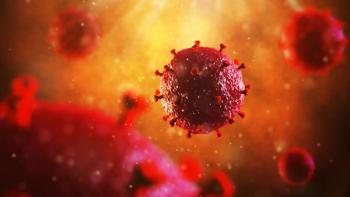
Heavily Treatment Experienced HIV Patient: Management Help
Here: a step-by-step guide to the ART management of HIV-infected individuals who are “heavily treatment experienced.”
Without question, the management of previously antiretroviral (ART)-naïve persons has become substantially easier in the last 3 years. Newly-approved, fixed-dose combination therapies associated with once-daily dosing and fewer side effects than older drugs are readily available. In addition, guidelines, such as the US Department of Health and Human Services Guidelines,1 list options for therapy for the ART-naïve--with advantages and disadvantages of various regimens well-described. Furthermore, HIV incidence in the US is increasing, and is likely to do so for at least another 5 years. Consequently, and justifiably, the major emphasis on treating HIV-infected persons in the last several years has been on the diagnosis, linkage to care, initiation of treatment, and retention in care of the previously undiagnosed or newly-diagnosed, ART-naïve, person.
Nevertheless, there exists a small, but important, group of HIV-infected individuals who are “heavily treatment experienced.” Many are “failing” their current ART. Whether due to previous non-adherence to therapy, or having started treatment in the “sequential monotherapy” era, these individuals have few options left as a result of resistance to multiple classes of antiretrovirals. How should you manage their therapy?
What follows is a step-by-step guide to the ART management in this population, which probably consists of only 5% of all HIV-infected persons. First, some background:
- Definition. While there is no universally agreed upon definition, one fairly common one is:
- Antiretroviral-experienced, with documented historical or baseline resistance, intolerability, and/or contraindications to antiretrovirals in at least 3 classes.
- Failing current antiretroviral regimen with an HIV-1 RNA ≥400 c/mL.
- Two or fewer classes with at least 1, but no more than 2, fully-active antiretrovirals remaining, which can be effectively combined to form a viable new regimen, based on current and/or documented historical resistance testing and tolerability and safety.
- Expanded access participation or enrollment into ongoing investigations of new classes of antiretrovirals is close to essential to the ART management in this population.
Now, the management steps, with caveats and commentary:
- Preliminary considerations
- Realize that this population does not have many chances for success (defined as HIV RNA < 400 copies/mL).
- Realize also that there does not exist any substantial guidance in the literature on the management of this population.
- Acquire all historical genotype/phenotype tests available. If none exists, order both a genotype and phenotype resistance test to all classes of available antiretrovirals.
- Realize that no reliable test is available for the injectable fusion inhibitor, enfuvirtide.
- Even if your patient is enfuvirtide-naïve (which assumes no resistance to that drug), realize that many HIV-infected persons will refuse to inject the product twice daily, as is required.
- Order current CD4+ cell counts and HIV RNA levels.
- Discuss adherence in depth. The higher the HIV RNA level (above or below 20,000 copies/mL), the greater the chance that non-adherence is the explanation for virologic failure.
- The higher the CD4+ cell count (above or below 200 cells/mL) the less is the urgency to change therapy.
- Contact a local or regional expert.
- By an “expert,” I mean someone who is at least regionally-recognized as an expert in HIV ART resistance.
- While no directory of such expertice exists, the HIV Medicine Association (HIVMA) may be able to help, as may local academic medical centers.
- Expect that such experts have more access to, and greater likelihood of enrollment into, both expanded-access protocols and randomized clinical trials.
- Turn over the ART care of the patient to the identified expert, but expect to collaborate in all other aspects of the care.
Truly, it is experience and the approach that matters: thoughtful analysis of the entire ART history, awareness of available antiretrovirals, access to trials of new classes of therapy, following the DHHS guidelines recommendation of adding (or changing to) at least 2 “fully active” drugs to a failing ART regimen, and scrupulous attention to adherence.
References:
Panel on Antiretroviral Guidelines for Adults and Adolescents. Guidelines for the use of antiretroviral agents in HIV-1-infected adults and adolescents. Department of Health and Human Services.
Newsletter
Enhance your clinical practice with the Patient Care newsletter, offering the latest evidence-based guidelines, diagnostic insights, and treatment strategies for primary care physicians.



















































































































































































































































































